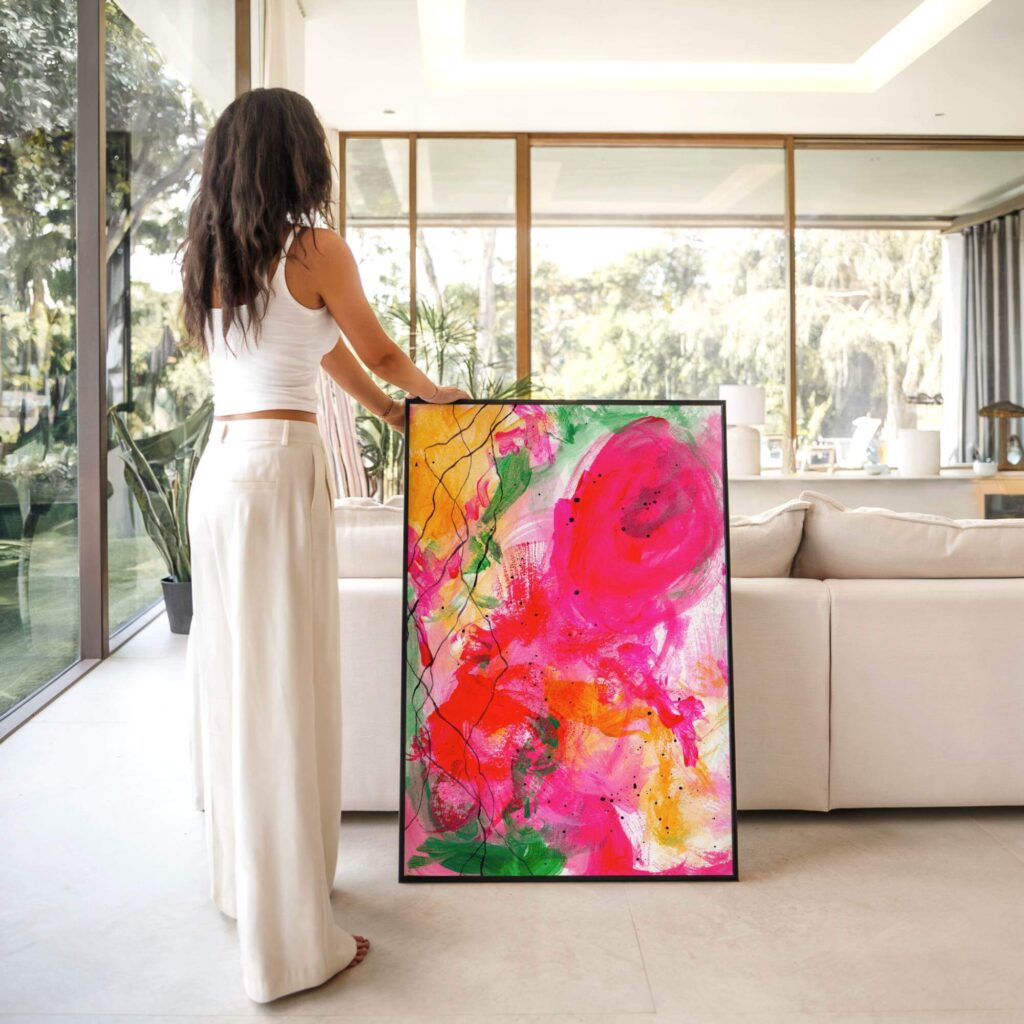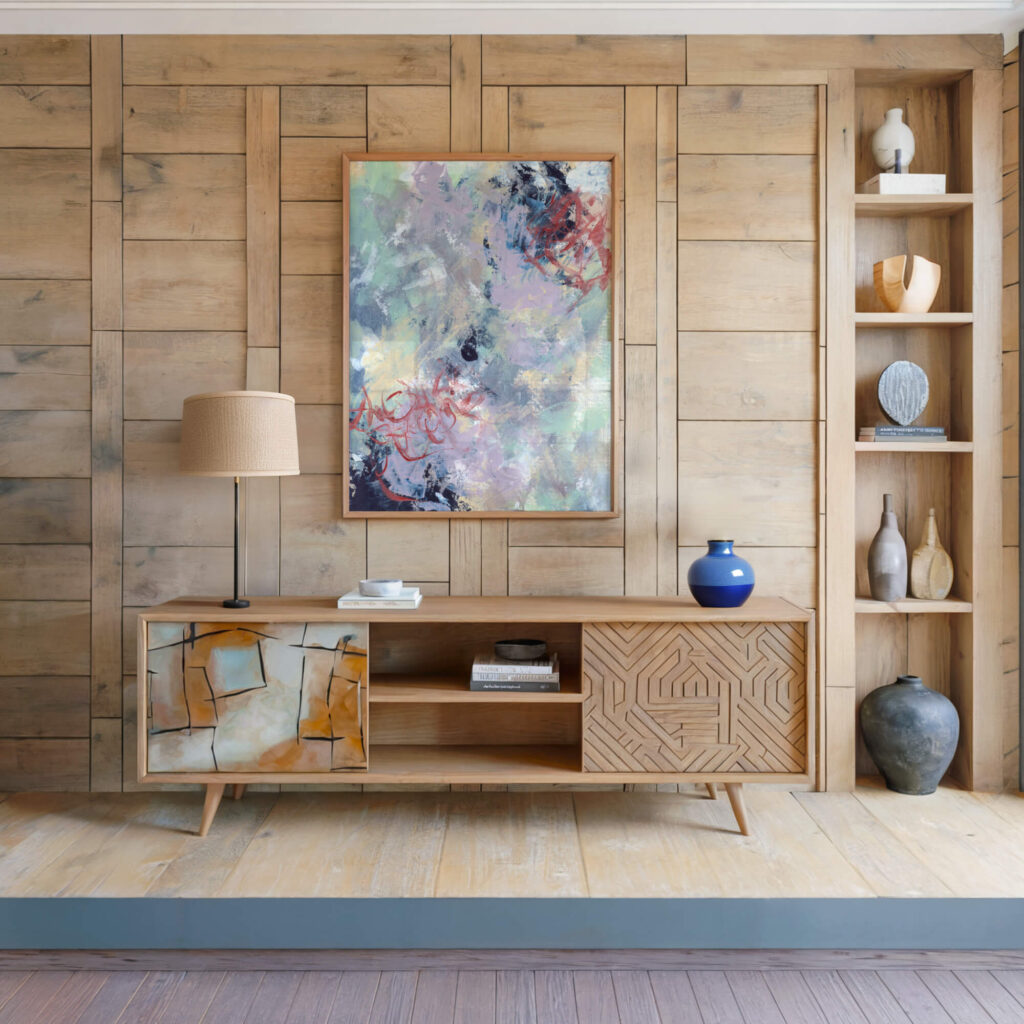Why Emotionally Intelligent Interiors Always Include Art
Designing with emotional intelligence means more than creating a space that looks good. It’s about crafting an environment that speaks to the soul, invites calm, and evokes connection. Here’s why art isn’t just a feature in emotionally intelligent interiors—it’s the foundation.
The Rise of Emotionally Intelligent Interiors
For years, interior design focused on aesthetics, function, and flow. But in today’s increasingly fast-paced, overstimulated world, the best designers and visionaries are turning toward something deeper: emotional intelligence.
An emotionally intelligent interior isn’t just beautiful—it feels right. It anticipates your emotional needs. It creates space for who you are beneath the surface.
And at the heart of this shift is something quiet but powerful: art.

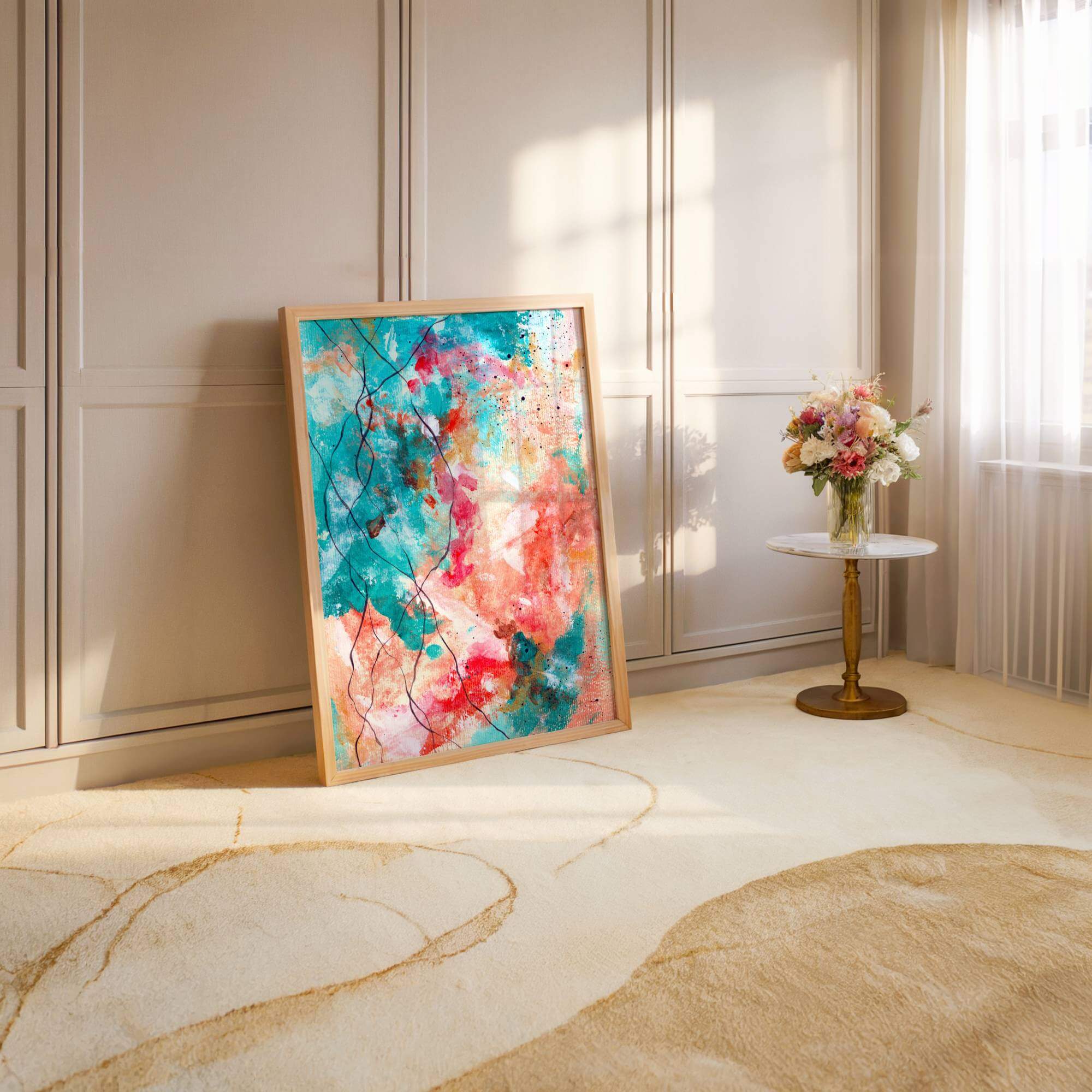
Art as Emotional Anchor
Abstract art, in particular, plays a vital role in spaces designed with empathy, depth, and awareness. Why? Because abstraction doesn’t dictate—it invites.
It holds complexity without trying to solve it. It lets the viewer interpret, reflect, and connect on their own terms. It softens the mental noise of overstimulation.
In an emotionally intelligent space, art isn’t picked to match the sofa. It’s chosen for how it makes people feel. It becomes a kind of presence—a silent co-creator of the atmosphere.
Why Emotionally Intelligent Spaces Need Art
Here’s what art can do that furniture and layout alone cannot:
Hold space for nuance and feeling
Create emotional safety and stillness
Serve as a grounding point in visually busy environments
Mirror the complexity of the human experience
Whether in an executive office, a wellness retreat, or a private residence, art helps people feel seen without being watched. It creates intimacy without demand.
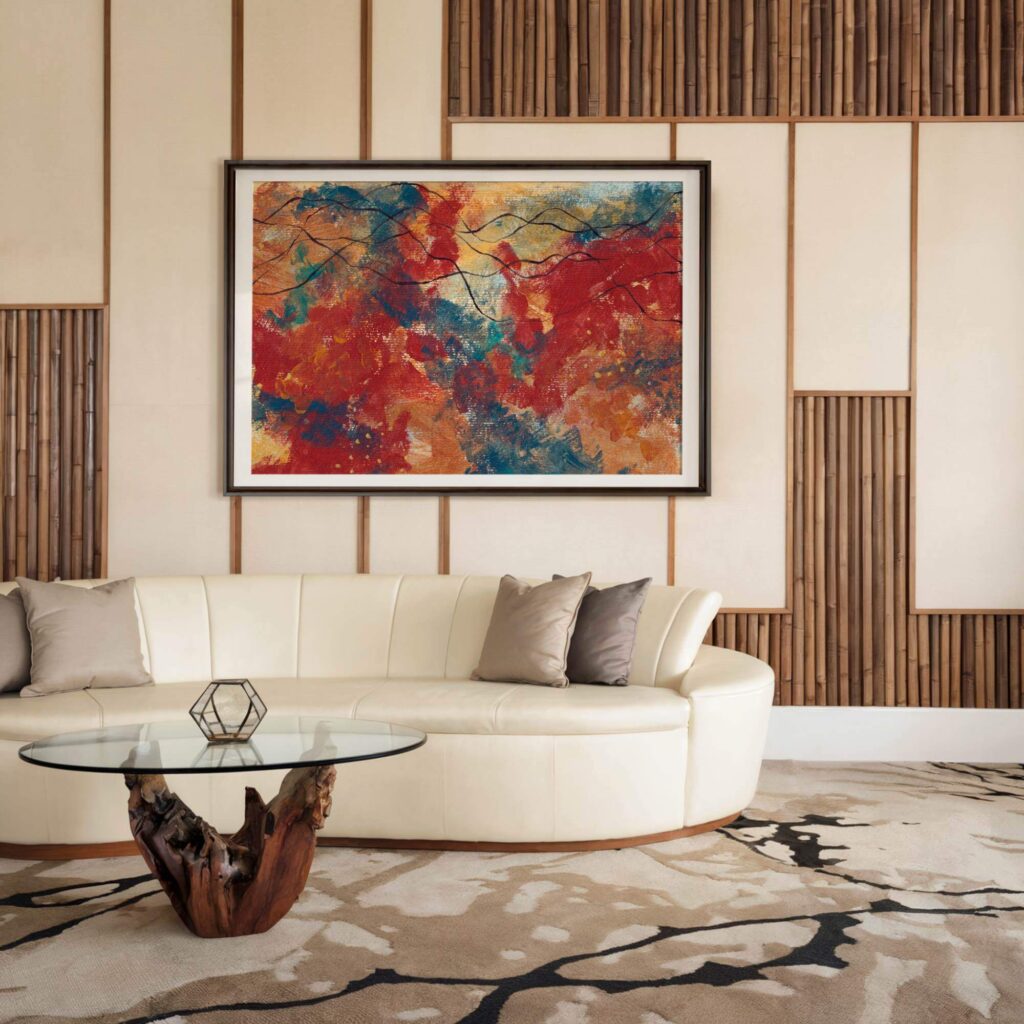
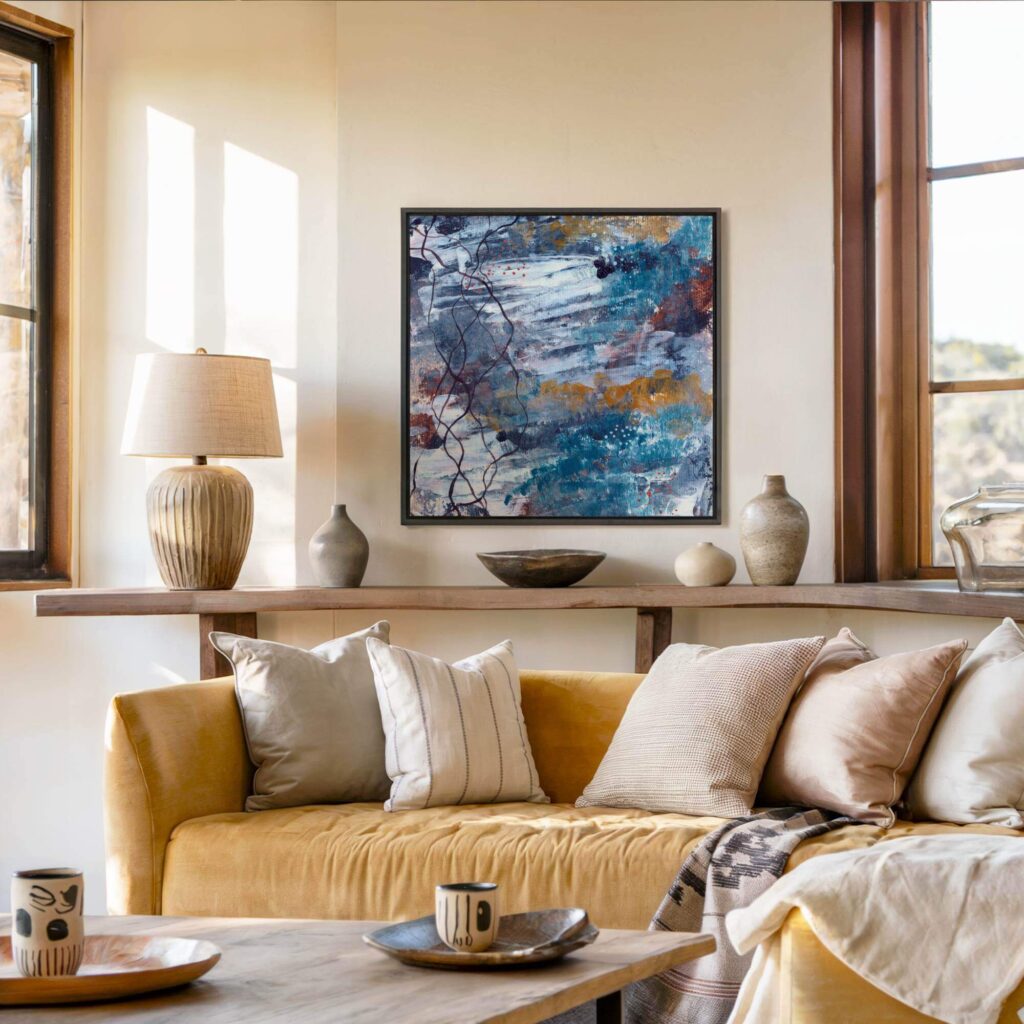
Real Presence Doesn’t Shout
In emotionally intelligent design, presence is more important than perfection. A painting with raw texture and depth can do more to ground a room than the most finely tuned lighting or materials.
Abstract art doesn’t shout to be heard. It listens. It holds. And in doing so, it creates presence—the real kind.
This is what emotionally intelligent interiors understand: It’s not about impressing. It’s about aligning. Inviting. Allowing.
How to Choose the Right Art for an Emotionally Intelligent Space
1. Start with emotion, not colour.
Ask: What feeling should this room hold?
2. Let the art guide the room’s tone.
Art isn’t a finishing touch—it can be a starting point.
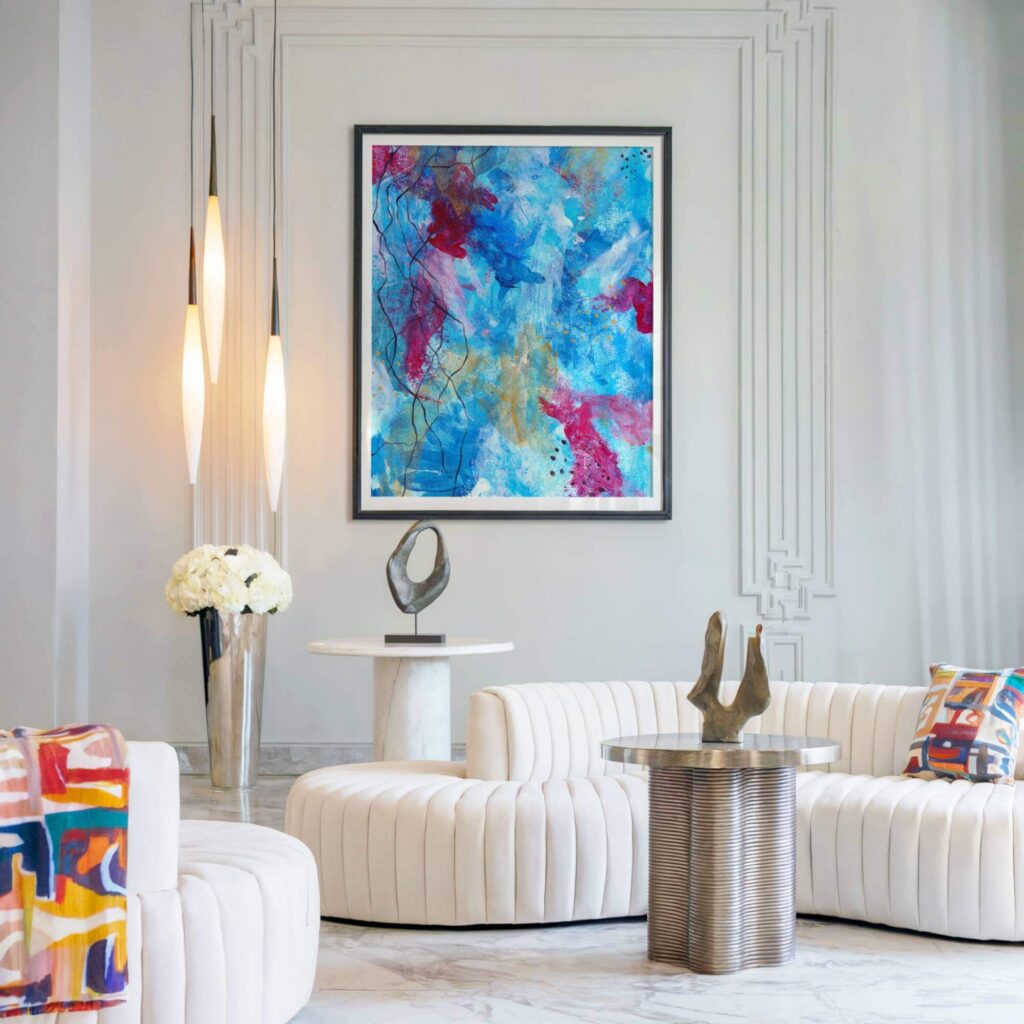
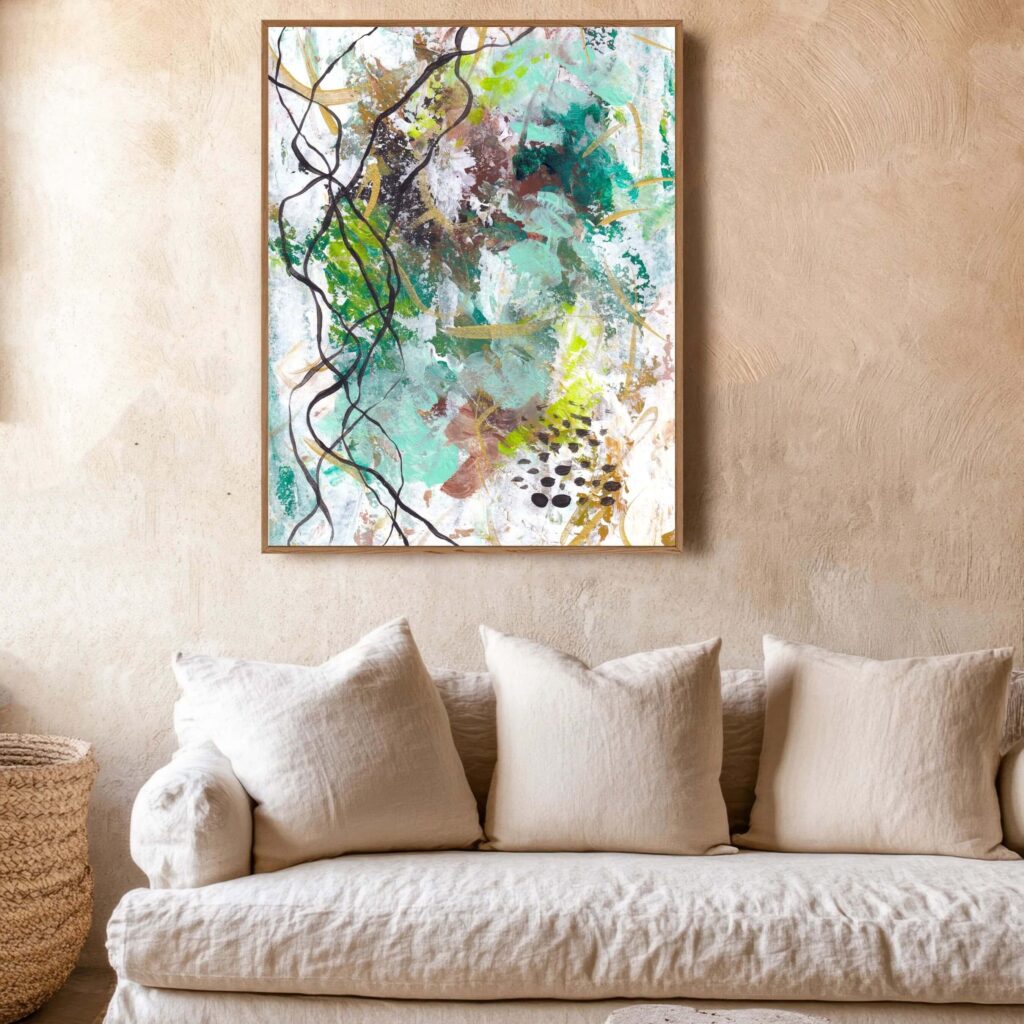
3. Choose pieces that invite reflection.
Avoid overly literal or narrative work if you want depth and stillness.
4. Involve the artist.
If you’re commissioning, choose someone who understands emotional energy, not just aesthetics.
The Quiet Luxury of Emotional Intelligence
In luxury interiors, the most powerful element is often the quietest. Emotionally intelligent spaces don’t just display good taste—they reveal emotional maturity. They hold space for people to breathe, reflect, and return to themselves.
And nothing supports that kind of environment like emotionally resonant abstract art.
Want to explore how art can transform your space?
Browse the Collector’s Vault or reach out to discuss bespoke placement for your private residence, retreat, or leadership space.
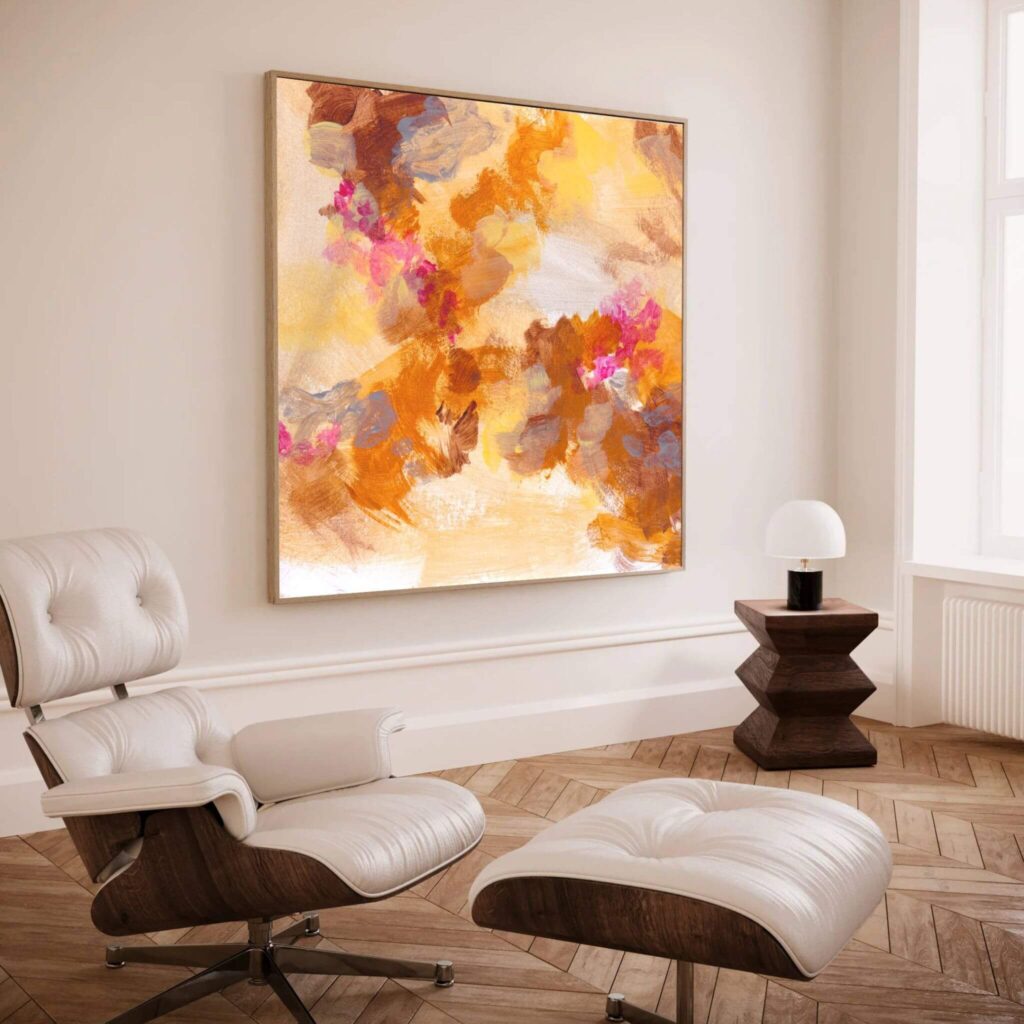
Collector's Vault
Canvas prints from the archive, made with emotional resonance and sustainable materials for spaces seeking depth.
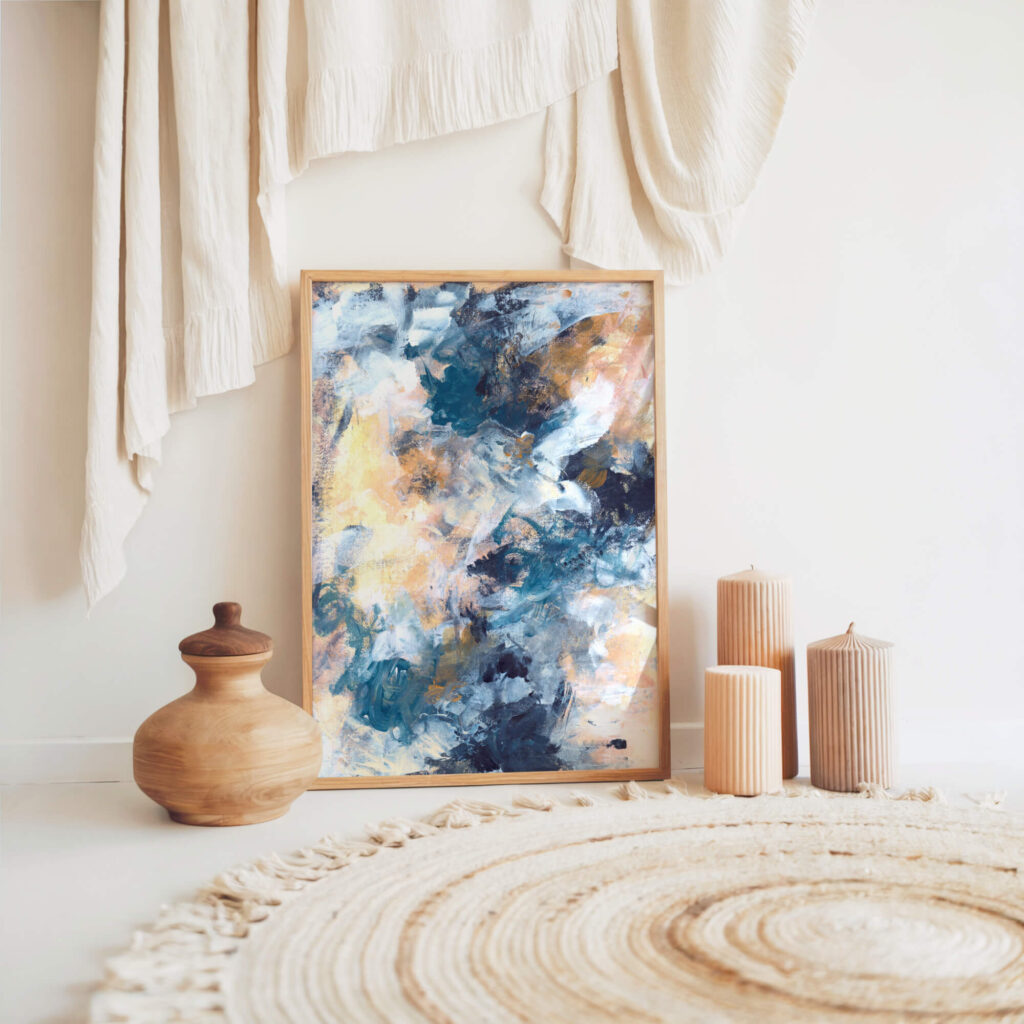
Capsule Commission
Created privately, one at a time, through stillness and reflection. Limited spaces each season to preserve depth and intimacy.
The Last 10
Ultra-limited, hand-embellished editions. No more than ten will ever exist. Made to ground, steady, and hold presence at the highest tier.
In Summary
Emotionally intelligent interiors aren’t just visually cohesive—they’re emotionally fluent. They respond to how people feel, not just how things look. In these spaces, art is not a finishing touch—it’s a foundation. It shapes energy, creates presence, and holds emotional space without words.
When chosen with care, abstract art becomes more than visual—it becomes visceral. The kind of quiet power that lingers long after someone leaves the room.
